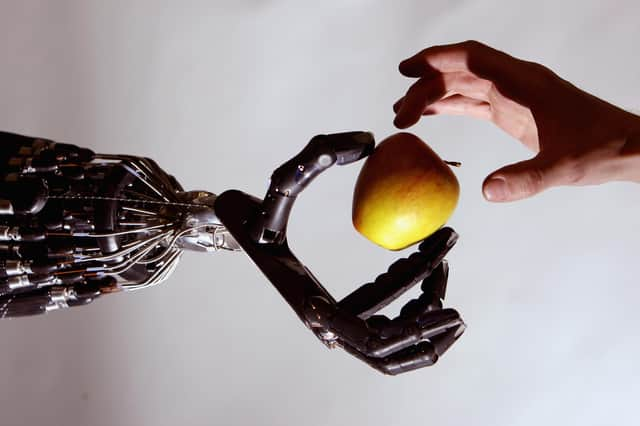Robots are being redesigned by computer programs that mimic natural evolution – Professor Emma Hart


The natural world offers many remarkable examples of species adapting to their environment through evolution, and some are so sophisticated they seem almost engineered.
For example, the ‘Marcgravia evenia’ species of vine relies on bats for pollination and has evolved to grow leaves shaped like satellite dishes to amplify sound and help bats to locate their flowers. Another is the rufa red knot bird whose incredibly efficient wing design enables it to fly 2,400km in a single stretch (four times the distance between Edinburgh and London).
Advertisement
Hide AdAdvertisement
Hide AdIt's therefore not surprising that computer scientists often mimic natural evolution to improve their own designs. They feed a software program a set of requirements and let an ‘evolutionary algorithm’ figure out the rest. It works by applying software versions of key natural evolutionary processes such as mutation and ‘survival of the fittest’ to evolve the best possible design according to the criteria it is given.
The results are fascinating. Perhaps the most surprising effect is the creativity of the designs which emerge. Unconstrained by human thinking, they are often radically different from existing human designs.
Almost two decades ago, Nasa sent a satellite into space with a communications antenna designed by artificial evolution, resulting in a design with lower power consumption and fabrication time, yet which performed better than human designs. They are now employing the same principles to design next-generation spacesuits, as well as buildings and cars.
Despite this success, designing moving objects such as robots creates other challenges for artificial evolution, because robots need well-designed brains, as well as bodies.
Researchers are responding to this by building a platform to autonomously design and build robots. The work, funded by UK Research and Innovation and in collaboration with Edinburgh Napier University, the universities of York, West of England, Sunderland and Vrije Universiteit Amsterdam, uses a combination of 3D printing and automated assembly to realise the designs.
Our focus has been designing robots to operate in dangerous environments, such as cleaning up a nuclear reactor, which we tested through digital and physical scenarios using artificial evolution to improve their task performance.
However, our work doesn’t stop there, and our next goal is using evolutionary design not only to create robots but to ensure they are more sustainable. By refocusing our technology to design robots from sustainable materials, we can use its powerful creativity to rethink building with bio-sourced materials and sustainable power sources.
Through harnessing this creativity, we could radically change the concepts of the robot design we work with. It will also help us consider the carbon emissions associated with a robot over its entire life cycle, manufacture, use, and recycling or disposal: all working to ensure future technology will drive the green recovery, and not be part of the problem.
Advertisement
Hide AdAdvertisement
Hide AdEmma Hart is a professor of computer science at Edinburgh Napier University, editor-in-chief of Evolutionary Computation, and a fellow of the Royal Society of Edinburgh. This article expresses her own views. The RSE is Scotland's national academy, bringing great minds together to contribute to the social, cultural and economic well-being of Scotland. Find out more at rse.org.uk and @RoyalSocE
Comments
Want to join the conversation? Please or to comment on this article.
